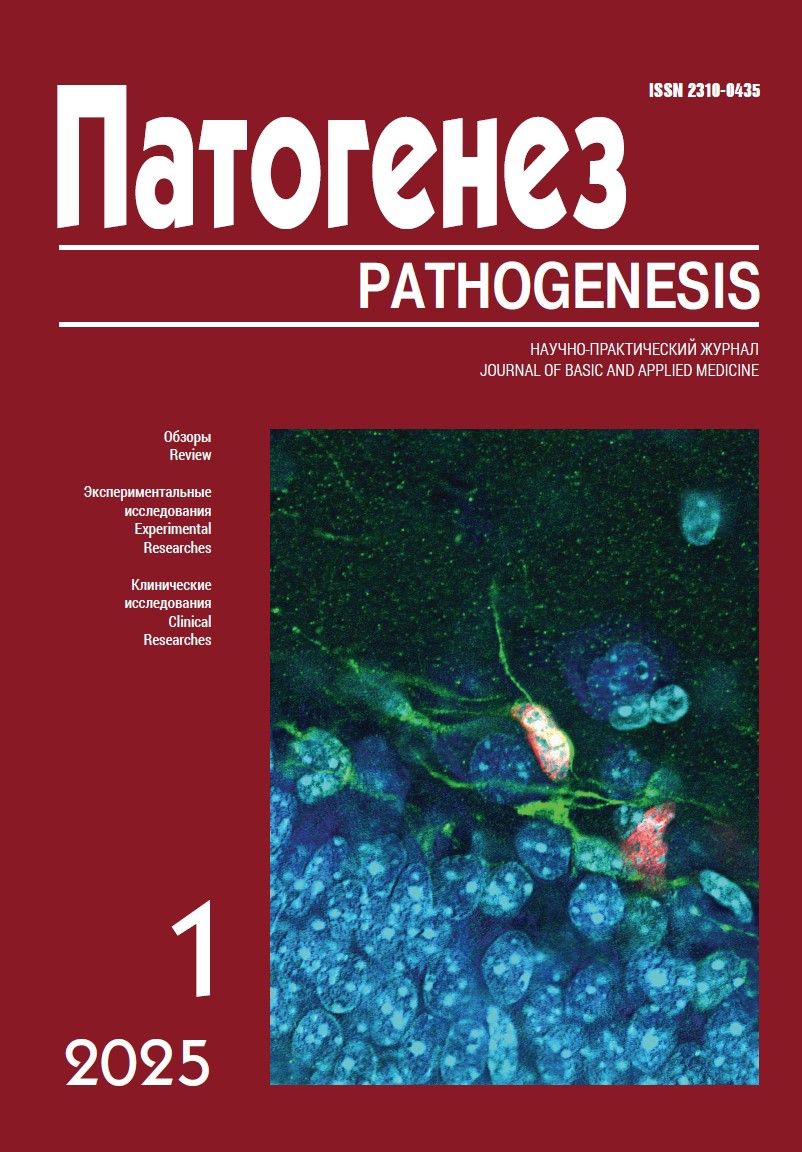Dynamics of body weight and features of feeding behavior of female rats in experimental temporomandibular joint dysfunction
Abstract
Introduction: The study of the pathogenesis of pain in the maxillofacial region is one of the key areas of biomedical science. Sodium monoiodoacetate (MIA) is a chemical reagent used in modeling osteoarthritis. The behavior of animals when using the above model is not sufficiently studied. It is important to emphasize that the majority of experimental works, including the use of MIA, were conducted on male animals.
Aim: to study the dynamics of body weight, as well as feeding and drinking behavior of female rats on the model of temporomandibular joint (TMJ) dysfunction.
Materials and methods: The studies were carried out on 19 female Wistar rats (body weight 255.0 ± 13.0 g). Three experimental groups were formed: intact animals (n = 5); rats injected with saline solution (0.04 ml; n = 6) into TMJ; individuals with intra-articular injection of MIA (16 mg/kg; n = 8). Body weight, daily water and food consumption were recorded at baseline, on the 13th and 26th days of observation in a Phenomaster system (TSE Systems GmbH, Germany).
Results: individuals with experimental TMJ dysfunction were characterized by a decrease in body weight, as well as a decrease in food and water consumption. The revealed changes are most pronounced by the end of the study.
Conclusion: The introduction of MIA into the TMJ of female rats leads to suppression of feeding and drinking behavior, and is accompanied by a decrease in body weight of animals. The detected features of metabolism and behavior of female rats after intra-articular injection of MIA supplement the available data and illustrate high validity of this model in studying the pathogenesis of long-term pain syndromes in mammals.




